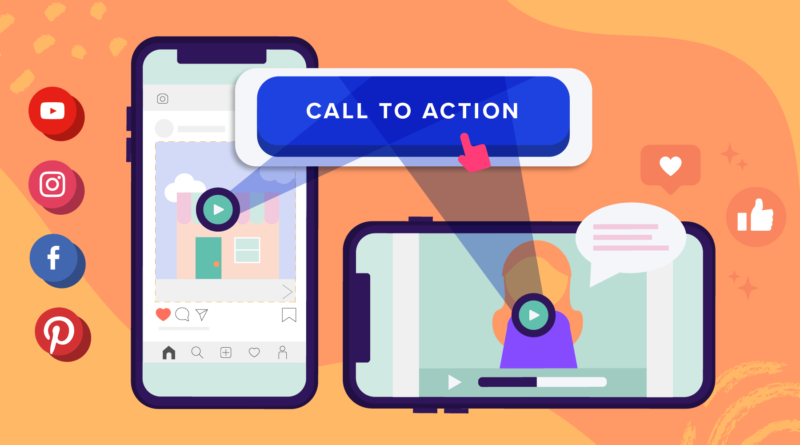CTAs: Why you have to tell your customer what to do
Discover how to write a call to action / call to action on your website in a way that is effective. On the Internet you have to be direct, clear and concise. The user who enters your page, has little time, wants you to give him the information he needs and to know what comes next.
Yes: we are aware. You are going to tell us that almost no one likes to be told what to do and who we are to order others what to do. There is part of the reason in this, but on the Internet there is no time to lose and the rules are different. The “call to actions” or calls to action are the synthesis that summarize the next step to take and can become so powerful that, if you want to increase the conversion of your website, you should continue reading. Let’s get to the point.
WHAT ARE CALL TO ACTION?
Table of Contents
You’ve seen them a thousand times. They are that phrase or button that appears highlighted on a website and that tells you what that company, page or person wants you to do: subscribe, leave your information, buy, download our e-book , are some examples. When you click on them, you are generally taken to a form, another landing page with a more detailed offer, or even a shopping gateway.
WHY SHOULD THERE BE CALLS TO ACTION?
Because they enhance your ability to convert. CTAs are necessary because whoever comes to your page either already has an interest, or may have it, and you must take care of making him or her want to create a link. Therefore, after an attractive text in which you explain what you offer, it is time to finish and close the sale . And there, there are no hot towels: we must go straight and expressly say what we want. Without leaving room for doubt.
WHY DO YOU HAVE TO BE SO DIRECT ON THE INTERNET?
Perhaps in a real conversation, we would have other possibilities or it could sound too abrupt, for example, take out the contract and say: sign . However, on the Internet everything is faster, more agile, more direct. The user enters your page; you have little time; they want you to give them the information they need and feel that you can help them fill a gap or solve a problem. They want to know in detail what you propose to them and, once they have understood it, they need to know what comes next. And if what comes next is “leave your details and we will contact you”, you must say so. Clearly. Assertiveness, which is said now. Conviction. Safety. Why? For many reasons.
- The time spent on a website by users is less and less. Reading time is limited and screens make us tired. We read diagonally. If we read. There is no time to lose.
- A website is by nature a hyperlink. If you want him to stay with you , you need him to go through screens and guide him through the whole process.
- Do not forget that the main objective of the websites is to convert, that is, to attract the customer first , convince them to stay and consume our content, hire a service or make a purchase. Therefore, we must capture their attention and tempt them to take the next step .
- We are impulsive. So, as standard. And on the Internet, more. We want to know what happens next. And what happens once I have hit the button. And that you have to know … and take advantage of it.
WHAT CAN A CTA BE USED FOR?
For all! For example, to:
- Generate visits to your website.
- Sell products or services .
- Increase leads or contacts. By providing your data, we increase our database of potential clients to whom we can send new offers.
- Strengthen ties and create a permanent relationship between users and your brand.
- Gain repercussion . For example, when a phrase is highlighted on a website and it is accompanied by a message such as “tweet it”, we are inviting you to spread our brand on networks.
HOW DO YOU HAVE TO WRITE A CTA TO BE POWERFUL AND EFFECTIVE?
With art, clarity and precision. Keep in mind that we are overwhelmed by so many calls to action that assail us as soon as we dive into the network, so:
- First of all, stop. It’s time for reflection. You must segment your audience, know it , know how it likes you to talk to it, what it wants and what it hurts. The more you know your potential customer, the more likely you are to get the tone, the language you use and what you offer them right.
- You won’t get others to lift a finger if you don’t offer them something valuable, so keep that in mind: offer valuable content . That whoever reads it feels that it is worth it.
- In a CTA, a verb should not be missing . In imperative, to be more exact. Remember that you are telling him what to do, so he has to be clear.
- But not just any verb , no. It has to be action – packed, attractive, direct. Instead of “Hit the button,” say “Boost your career and join us.”
- You must use direct, concise language that expresses your offer very clearly . Get to the point, but reflect the benefits and advantages of clicking there. Have I said before that there is no time to waste?
- But always, always, always, in an attractive way . Okay, you’re telling me what to do, but not that it sounds like an order.
- Important: in calls to action, forget about technicalities and jargon that is too high. Flatten the message. Practical and understandable messages, please.
- Of course, make sure they are short . You’re saying what to do, right? Well, say it and that’s it: don’t get involved or it will stop being a call to action.
- Take care of the aesthetics of the CTA and make it stand out with a good design that is also consistent with the visual line of your brand . As always, the image counts.
- Pick the right place – don’t hide your CTA . Find its ideal location, which can be at the top left (one of the first places we look at on the screen motivated by the way we read), or on the first page without scrolling (without lowering the cursor), or right at the end of the article …
- If you can, include numbers . The numbers impress, they give weight to the messages, they make specific. Take advantage of its power: “Download the code and enjoy a 15% discount.”
- Do not abuse adverbs , as they can blur the message, but look at the effectiveness of some adverbs that are linked with immediacy such as “here”, “now” or “today”. The sense of urgency moves to action. Use them, but dose their use .
HOW OFTEN DO YOU HAVE TO WRITE CTAS?
With the just and necessary. Sometimes, we find texts full of calls to action, all of them with links that take us to different places. Outcome? Total dizziness Users do not know where to go or what we want from them. Confusion. Disaster. Therefore, it is preferable to be clear that each post, landing page or page on our website must have an objective and, therefore, a unique message: a page, an action.
This does not mean that we can only put one call to action per page, no. We can put more, but always aimed in the same direction and without overwhelming. The user wants to know what comes next, but he is not stupid: you do not have to repeat it a thousand times. And he doesn’t like heavy ones either.
Everything on the Internet is faster, more agile, more direct. The user who enters your page, has little time, wants you to give him the information he needs and to know what comes next.
Try … and be wrong
Notice, I was going to write “trial and error”, but it is not a call to action, so I have transformed it into “try and be wrong”, which has more force. It is a message that is more direct, that can reach you more, that talks about you.
But where are we going … With CTAs, as in almost everything in life, the interesting thing is to try new formulas, see if they work for us, which ones are successful and which ones fail. Your audience is yours and yours alone and CTAs will help you get to know it. So, try, get it wrong, hit and convert.



